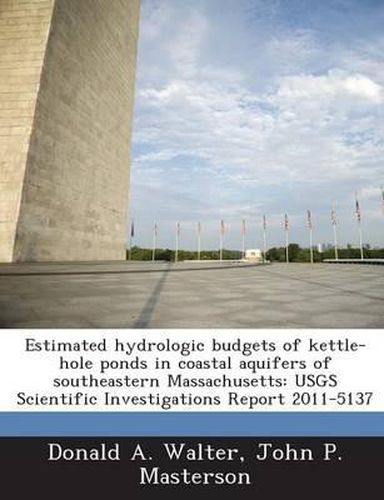Readings Newsletter
Become a Readings Member to make your shopping experience even easier.
Sign in or sign up for free!
You’re not far away from qualifying for FREE standard shipping within Australia
You’ve qualified for FREE standard shipping within Australia
The cart is loading…






Kettle-hole ponds in southeastern Massachusetts are in good hydraulic connection to an extensive coastal aquifer system that includes the Plymouth-Carver aquifer system on the mainland and aquifers underlying Cape Cod. The ponds receive water from, and contribute water to, the underlying glacial aquifer; ponds also receive water from precipitation and lose water to evaporation from the pond surface. Some ponds are connected to surface-water drainage systems and receive water from or contribute water to streams or adjacent wetlands. The Massachusetts Department of Environmental Protection currently (2011) is developing Total Maximum Daily Loads of phosphorus for the freshwater ponds in the region to maintain the health of pond ecosystems; the amounts and sources of water fluxes into and out of the ponds are important factors in determining the amount of phosphorus that can be assimilated into a pond. To assist in this effort, the U.S. Geological Survey used groundwater-flow models of the coastal aquifer system to estimate hydrologic budgets-including inflows and outflows from the aquifer system and adjacent streams and wetlands, and recharge from precipitation-for 425 ponds in southeastern Massachusetts. Water fluxes through the ponds are a function of several factors, including the size, shape, and bathymetry of the pond, orientation of the pond relative to the regional hydraulic gradient, and hydrologic setting relative to the proximity of groundwater divides and discharge boundaries. Total steady-state fluxes through the ponds range from more than 3,300,000 to less than 2,000 cubic feet per day. For ponds without surface-water inlets or outlets, groundwater inflow accounts for 98 to 3 percent of total inflow; conversely, recharge onto the pond surface accounts for the remainder of inflow (between 2 and 97 percent). All natural flows from these ponds are through recharge from the pond into the aquifer. In one pond, about 94 percent of the total outflow is removed for water supply. For ponds that are connected to surface-water drainages, most inflow and outflow are through streams. Ponds that receive water from streams receive most (58 to 89 percent) of their water from those streams. Ponds that are drained by streams lose between 5 and 100 percent of their water to those streams.
$9.00 standard shipping within Australia
FREE standard shipping within Australia for orders over $100.00
Express & International shipping calculated at checkout
Kettle-hole ponds in southeastern Massachusetts are in good hydraulic connection to an extensive coastal aquifer system that includes the Plymouth-Carver aquifer system on the mainland and aquifers underlying Cape Cod. The ponds receive water from, and contribute water to, the underlying glacial aquifer; ponds also receive water from precipitation and lose water to evaporation from the pond surface. Some ponds are connected to surface-water drainage systems and receive water from or contribute water to streams or adjacent wetlands. The Massachusetts Department of Environmental Protection currently (2011) is developing Total Maximum Daily Loads of phosphorus for the freshwater ponds in the region to maintain the health of pond ecosystems; the amounts and sources of water fluxes into and out of the ponds are important factors in determining the amount of phosphorus that can be assimilated into a pond. To assist in this effort, the U.S. Geological Survey used groundwater-flow models of the coastal aquifer system to estimate hydrologic budgets-including inflows and outflows from the aquifer system and adjacent streams and wetlands, and recharge from precipitation-for 425 ponds in southeastern Massachusetts. Water fluxes through the ponds are a function of several factors, including the size, shape, and bathymetry of the pond, orientation of the pond relative to the regional hydraulic gradient, and hydrologic setting relative to the proximity of groundwater divides and discharge boundaries. Total steady-state fluxes through the ponds range from more than 3,300,000 to less than 2,000 cubic feet per day. For ponds without surface-water inlets or outlets, groundwater inflow accounts for 98 to 3 percent of total inflow; conversely, recharge onto the pond surface accounts for the remainder of inflow (between 2 and 97 percent). All natural flows from these ponds are through recharge from the pond into the aquifer. In one pond, about 94 percent of the total outflow is removed for water supply. For ponds that are connected to surface-water drainages, most inflow and outflow are through streams. Ponds that receive water from streams receive most (58 to 89 percent) of their water from those streams. Ponds that are drained by streams lose between 5 and 100 percent of their water to those streams.